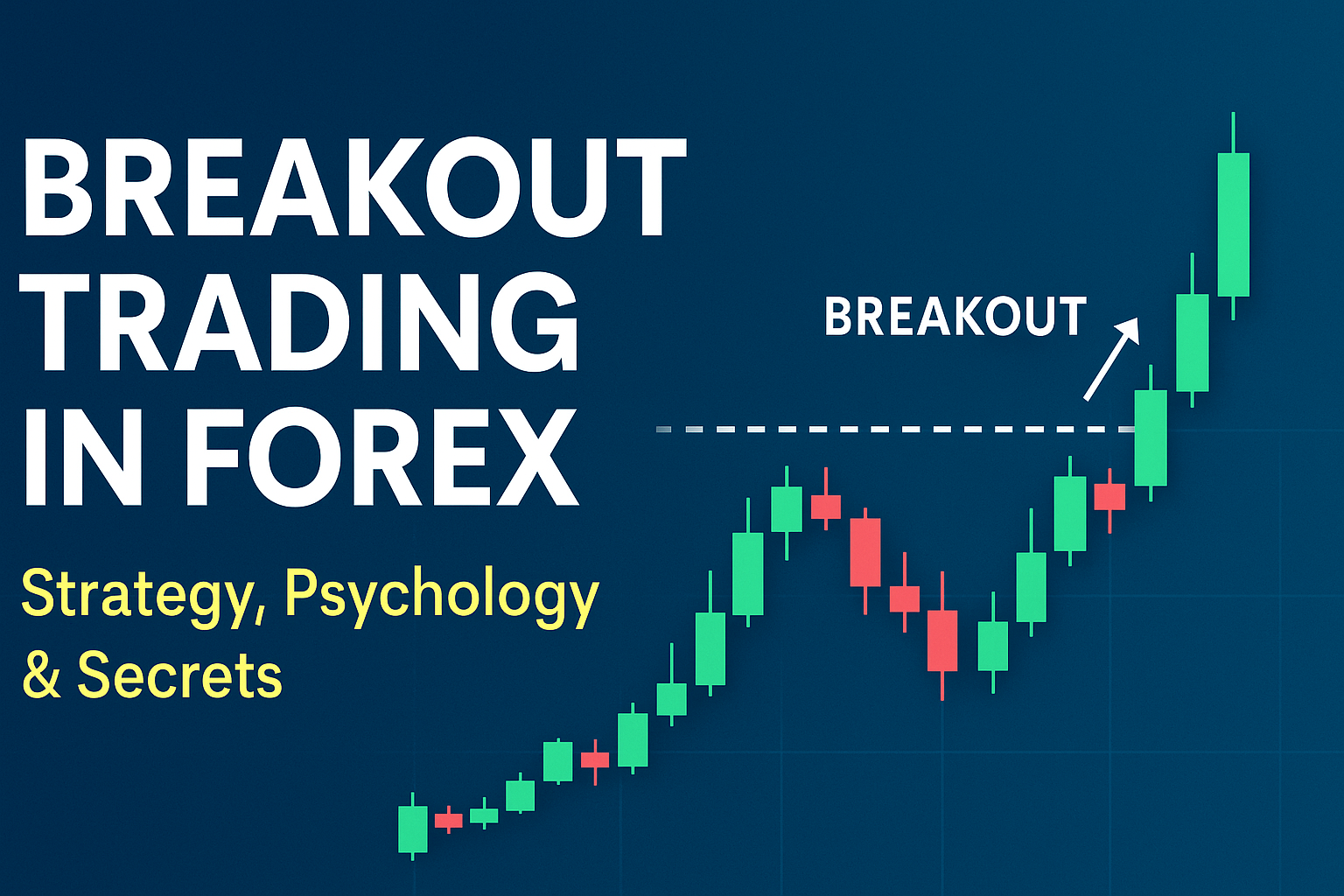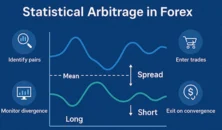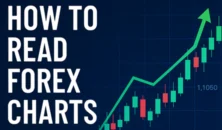- Definition
- 1. Understanding the Anatomy of a Breakout
- 2. Types of Breakouts in Forex
- 3. The Psychology Behind Breakouts
- 4. How to Trade a Breakout Strategy Step by Step
- 5. False Breakouts: The Hidden Trap
- 6. Backtesting and Data: Turning Theory Into Confidence
- 7. Risk Management: The Secret Ingredient
- 8. Common Mistakes Breakout Traders Make
- 9. Tools That Help Breakout Traders
- 10. The Evolving Landscape of Breakout Trading
- Final Thoughts: The Art of Controlled Aggression

Definition
A breakout happens when the price of a currency pair moves beyond a significant support or resistance level that has previously contained price action, and Breakout trading strategy in forex is trade based on them.
In simple terms, the market “breaks out” of a range, trendline, or pattern such as a triangle or flag and enters new territory. This move often signals a potential start of a new trend or the continuation of an existing one.
Why Breakouts Matter
Breakouts represent a shift in market sentiment. They tell you that the balance between buyers and sellers has changed and that momentum could be building behind one side. When price consolidates, traders wait. When it breaks, traders act. That reaction is what makes breakout trading so powerful and volatile.
1. Understanding the Anatomy of a Breakout
Before diving into strategy, it’s crucial to understand how breakouts form and why they sometimes fail.
The Build-Up
Markets often move sideways before big events forming consolidation zones where supply and demand balance out. This “quiet” phase reflects indecision. Traders accumulate positions; volatility drops.
Like a spring being compressed, the longer the consolidation, the stronger the eventual move tends to be.
The Break
When the price finally moves beyond a key level especially on strong volume it attracts traders who’ve been waiting on the sidelines. Stop orders above resistance or below support are triggered, fueling acceleration.
The Retest
After the breakout, the market often pulls back to retest the old level now acting as new support or resistance. A successful retest adds confirmation that the breakout is real.
2. Types of Breakouts in Forex
Breakouts can occur across different contexts. Recognising which type you’re dealing with helps you adapt your tactics.
a) Range Breakouts
This is the classic setup price trapped between horizontal support and resistance. When the boundary breaks, traders look for follow-through momentum.
b) Chart Pattern Breakouts
Breakouts also emerge from chart formations like triangles, flags, wedges, or rectangles. These patterns represent consolidation and energy buildup. A breakout from a triangle, for example, suggests the continuation of the dominant trend.
c) News-Driven Breakouts
Economic announcements like interest rate decisions, inflation data, or job reports can cause explosive volatility. Breakouts here are often fast and sharp, but also riskier due to slippage and unpredictability.
d) Trendline Breakouts
Breaking a well-respected trendline can signal a reversal. Traders often watch these for early signs that a prevailing trend is weakening.
3. The Psychology Behind Breakouts
At its heart, breakout trading is a psychological game. Prices move because people act and people act based on emotion and perception.
- Fear of Missing Out (FOMO): When price breaks out, traders rush in, afraid they’ll miss the next big move.
- Fear of Loss: Some traders sell too early after entering, afraid the move will reverse.
- Greed: Others hold on too long, ignoring reversal signals.
Understanding this crowd psychology is essential. The best breakout traders are those who stay calm amid chaos, stick to their rules, and avoid being swept up by emotion.
4. How to Trade a Breakout Strategy Step by Step
Here’s a practical approach used by experienced traders to identify and trade high-probability breakouts.
Step 1: Identify a Valid Structure
Look for clear, well-defined levels that the market has respected multiple times. The more touches, the more meaningful the breakout. Avoid random lines structure builds credibility.
Step 2: Confirm With Volume and Volatility
In forex, volume data is decentralised, but volatility indicators (like the ATR) or tick volume can signal genuine participation. A breakout with rising volatility is more trustworthy than one occurring in a quiet market.
Step 3: Wait for Candle Confirmation
Avoid entering the moment price ticks above resistance. Wait for a close beyond the level especially on a higher time frame (like 1-hour or 4-hour). False breakouts often snap back before the candle closes.
Step 4: Plan Your Entry
Two common approaches:
- Aggressive entry: Enter immediately after breakout confirmation.
- Conservative entry: Wait for a retest of the broken level (support/resistance flip).
Step 5: Manage Risk
Always use stop-loss orders. A logical place is just below the breakout point for buys (or above for sells).
Risk small per trade (usually 1–2% of account balance). Breakouts can fail quickly; protect your capital.
Step 6: Define Targets
Use prior swing highs/lows, measured moves from chart patterns, or Fibonacci extensions. Many traders also trail stops to capture extended trends.
5. False Breakouts: The Hidden Trap
Not every breakout is real. In fact, false breakouts are one of the biggest challenges in forex trading.
They occur when price pierces a key level triggering entries only to reverse back into the range. Big players sometimes exploit this by “hunting stops” before driving price in the opposite direction.
How to Filter False Breakouts
- Wait for candle closes beyond levels.
- Confirm with momentum: Use RSI, MACD, or volume surges.
- Be aware of timing: Breakouts during low-liquidity periods (like Asian session) are less reliable.
- Watch for news catalysts: Random spikes without fundamental backing often fade.
A patient trader who avoids impulsive entries will automatically filter many losing trades.
6. Backtesting and Data: Turning Theory Into Confidence
Successful breakout traders treat strategy like science they test it.
Use historical data to measure:
- Win rate and risk-to-reward ratio.
- Average breakout distance before reversal.
- Best pairs and sessions (e.g., GBP/USD during London open).
This transforms emotional guessing into statistical confidence a key psychological edge.
7. Risk Management: The Secret Ingredient
Even the best breakout setups fail sometimes. That’s why professional traders focus less on being right, and more on managing wrong.
Follow these golden rules:
- Never risk more than 2% per trade.
- Avoid stacking correlated pairs.
- Trail stops to protect gains.
- Keep a journal document what worked and what didn’t.
Risk management ensures survival and survival is the first step toward consistency.
8. Common Mistakes Breakout Traders Make
- Entering too early : anticipating the breakout before confirmation.
- Ignoring context : trading against higher-time-frame trends.
- No stop-loss : letting a small fakeout become a large loss.
- Chasing after missed trades : emotional revenge trading.
- Over-trading : forcing setups when the market is ranging tightly.
Avoiding these mistakes separates pros from amateurs.
9. Tools That Help Breakout Traders
- Support/Resistance Drawing Tools – Identify zones with precision.
- Moving Averages (MA) – Confirm trend direction.
- Average True Range (ATR) – Gauge volatility and set stop distances.
- Volume or Tick Indicators – Spot genuine breakout strength.
- Price Alerts – Let technology watch the market for you.
Automation doesn’t replace analysis it enhances discipline.
10. The Evolving Landscape of Breakout Trading
Forex markets are evolving. Algorithmic trading and high-frequency systems now dominate much of short-term price action. Still, human traders can thrive by focusing on higher-time-frame breakouts (e.g., 4H, daily charts), where institutional order flow drives trends.
With AI-powered tools, traders can now backtest, detect, and even auto-filter breakout setups with higher precision. Yet the principle remains timeless: Price always tells the truth the key is listening without bias.
Final Thoughts: The Art of Controlled Aggression
Breakout trading is not about predicting it’s about reacting intelligently. You’re not forecasting the future; you’re aligning with momentum once the market reveals its hand.
It’s a dance between patience and decisiveness. Wait too long, you miss the move; act too fast, you get trapped. Mastering this balance is what transforms breakout trading from a gamble into an art form.
Remember:
- Structure creates opportunity.
- Confirmation builds confidence.
- Risk management ensures survival.
Whether you’re a beginner or seasoned trader, understanding breakouts their structure, psychology, and rhythm will give you a deeper connection to how markets really move.







